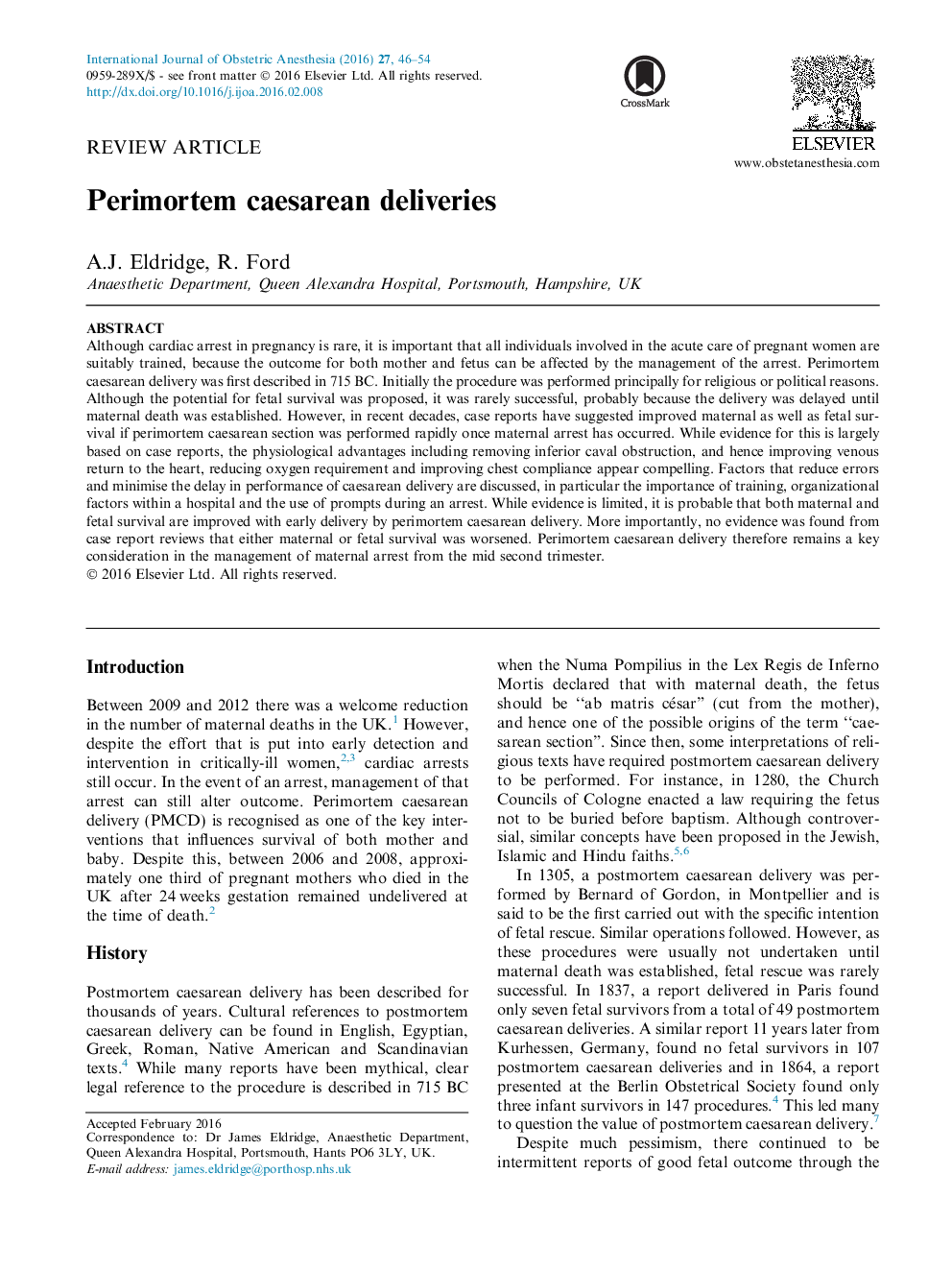| Article ID | Journal | Published Year | Pages | File Type |
|---|---|---|---|---|
| 2757409 | International Journal of Obstetric Anesthesia | 2016 | 9 Pages |
•The history of perimortem cesarean deliveries is reviewed.•The benefits of perimortem caesarean delivery to mother and fetus are highlighted.•The process of performing a perimortem caesarean delivery is discussed.
Although cardiac arrest in pregnancy is rare, it is important that all individuals involved in the acute care of pregnant women are suitably trained, because the outcome for both mother and fetus can be affected by the management of the arrest. Perimortem caesarean delivery was first described in 715 BC. Initially the procedure was performed principally for religious or political reasons. Although the potential for fetal survival was proposed, it was rarely successful, probably because the delivery was delayed until maternal death was established. However, in recent decades, case reports have suggested improved maternal as well as fetal survival if perimortem caesarean section was performed rapidly once maternal arrest has occurred. While evidence for this is largely based on case reports, the physiological advantages including removing inferior caval obstruction, and hence improving venous return to the heart, reducing oxygen requirement and improving chest compliance appear compelling. Factors that reduce errors and minimise the delay in performance of caesarean delivery are discussed, in particular the importance of training, organizational factors within a hospital and the use of prompts during an arrest. While evidence is limited, it is probable that both maternal and fetal survival are improved with early delivery by perimortem caesarean delivery. More importantly, no evidence was found from case report reviews that either maternal or fetal survival was worsened. Perimortem caesarean delivery therefore remains a key consideration in the management of maternal arrest from the mid second trimester.
